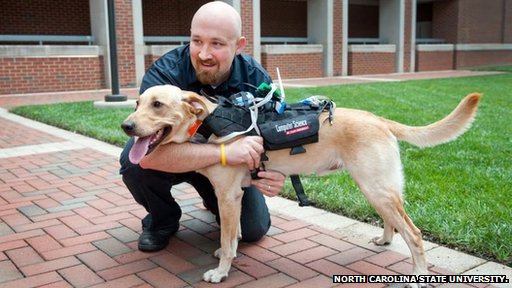U.S. engineers have invented a new technology that can help you better communicate with your dog, and they’re hoping to make it available to everyone from service dog handlers to owners interested in training their furry companions more effectively.
Developed at North Carolina State University, the new wearable device, which your dog wears like a harness, is set to improve the way you communicate with your dog. Because it’s fitted with physiological and behavioral sensors, the harness gives owners a real-time picture of their dog’s mental and emotional state, and allows them to more effectively send back signals and commands, even if the dog is out of sight.

No bigger than a deck of cards, the device inside of the harness works using two types of communication technologies. The first allows dogs to communicate with their owners, and the second allows owners to communicate with their dogs. Since dogs often use body language to communicate their intentions and moods, the device uses special sensors that can identify what’s going on with their posture, such as if the dog is standing, running, sitting, or cowering. The physiological sensors monitor the dog’s heart rate and body temperature, and all of this information is sent to another device that’s held by the owner. From there, the owner can get a real-time profile of the dog’s physical well-being and emotional state, and can use the handheld device to communicate signals back to the dog using physical and vocal cues.
According to the team behind the device, it can also be customized with additional capabilities depending on what the owner wants to use it for. For search and rescue, added environmental sensors are able to detect hazards such as gas leaks, and a camera and microphone can pick up on additional information. The team is also working on applications available for guide dogs so their handlers are able to monitor their stress levels more effectively. They’re also hoping to improve the device’s physiological sensors so animal shelters and hospitals can keep a better watch on the state of their dogs.
Story via BBC.
Advertisement
Learn more about Electronic Products Magazine





